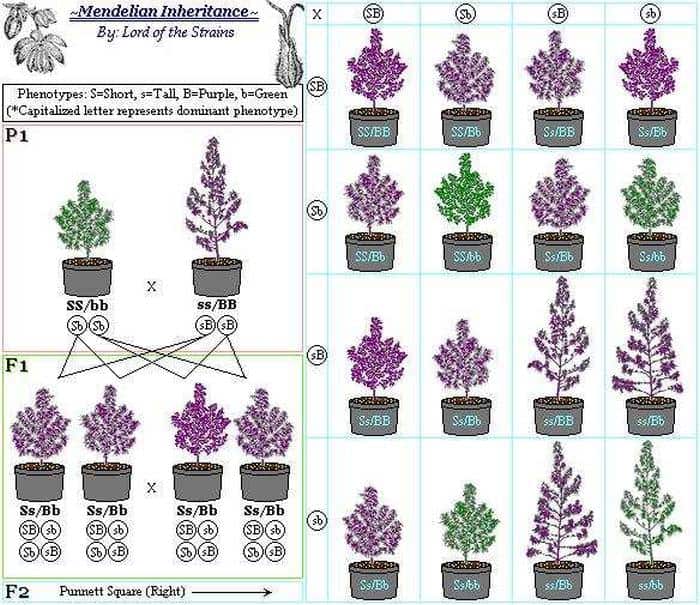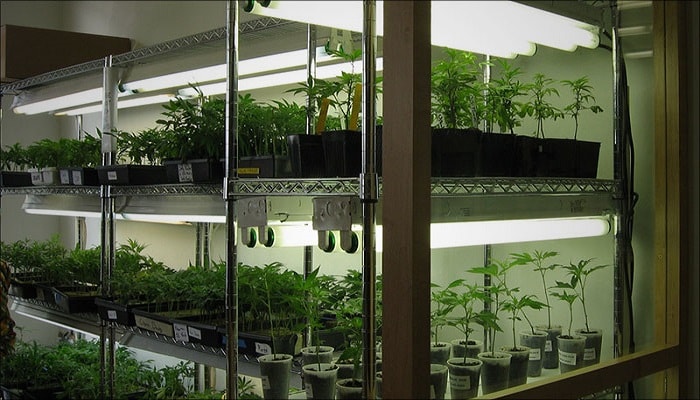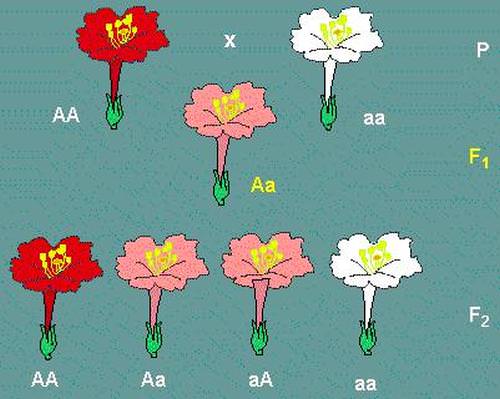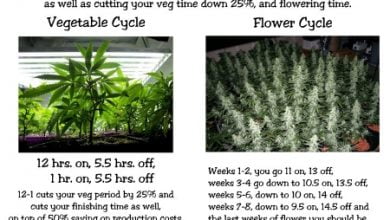Breeding cannabis strains, f1 and f2 for dummies
Anyone who has ever bought seeds from reputable breeder could see several markings on the packaging next to the information about genetics.
You will come across terms like f1 F1, F2, and IBL are 4 designations that tell a lot about a plant.
Consider what they mean to expand your cannabis breeding vocabulary. Here you will find the mystery surrounding breeding new cannabis strains explained.
Cannabis Breeding Genetics F1 and F2 Generations
F1 is the first generation, F2 is the second, and IBL stands for inbred lines. Welcome to the world of cannabis breeding
In common with orchids and prize roses, Cannabis seed strains are grown and cross-bred by botanists to create new cannabis breeds with different characteristics.
The most important characteristics manipulated through cross-breeding are the size of the plant, bud to leaf ratio, yield, taste, effect, and acclimatization to western growing conditions.

Breeding f1 and f2 cannabis seed
in the world of cannabis cultivation as experienced marijuana lovers will have already noticed, there are a lot of varieties of the plant. Most of them are hybrids.
Hybrids are strains created by selection. New varieties are created by crossing two parental strains over many generations. Strains that over time have adapted to their environment in a natural way are called landraces.
The hybridization process was first carried out in the late 1850s by the monk Gregor Mendel. His first experiments were with pea plants. Mendel crossed two different types of peas and raised their offspring.
He observed the hybrid for two generations and recorded its characteristics. Mendel found that most of the plants were predominantly dark in color, and in a minority, light.
This simple observation has proven to be key to the development of modern genetics and true for cannabis as well
Mendel found that some physical properties are dominant while others are recessive. The dominant trait is the one that has more chances to manifest itself, and the recessive traits are those properties that are usually hidden in the first generation (F1) hybridization, but appear in the next.
What are Inbred Lines (IBL)?

Inbred lines (IBL) are needed to capture recessive traits and create a consistent strain. Strains continue to be crossed for generations, each time selecting their desired properties.
Continuous breeding of varieties creates almost identical offspring. The seeds should produce incredibly similar plants. For example, a common myth says that the G-13 indica strain was bred for 13 generations until it was unexpectedly presented to the public.
Some breeders take years to develop the perfect strain, as in the case of Charlotte’s Web, one of the best-known high-CBD cannabis strains.
The designation “IBL” next to the name of the strain indicates that the variety was bred as a result of repeated crossing over 2 or more generations. Also, the terms such as f1 “F1” and “F2” are often found, which speak of a generation.
Sativa/Indica Differences
There are two main varieties of Cannabis found in the world: Cannabis sativa and Cannabis indica. Cannabis sativa is a large “pine-tree like” plant with light green foliage. It is indigenous to Mexico, Columbia, Thailand, India, and Africa.
Cannabis Indica on the other hand is a smaller plant with wide, dark green foliage. It matures earlier and produces more potent, fatter, resinous flowers. Cannabis indica is indigenous to the high northern mountain ranges of the Afghani Hindu Kush, Pakistani Kara Korams, Russian Pamirs, and Indian Himalayas.
There are many strains of each of the Cannabis varieties. cannabis indica and cannabis sativa.
Cross-breeding cannabis varieties
Until the last few decades, there had been very little crossbreeding of these Cannabis varieties because of this natural geographic segregation. However, in the 1960s and 70s seeds from different strains of the two varieties were collected from around the world.
The strains were cross-bred by fertilizing isolated flowers from one variety with pollen from a strain of the other variety, creating offspring strains that were superior to the parents in terms of resistance to disease, yield, and levels of THC (the psychoactive ingredient in Cannabis), and could be grown better in northern latitudes.

Hybrid
A term used to describe strains produced by crossbreeding two different “true-breeding” strains.
True-breeding strains will produce true to type if reproduced from their own seeds, so different generations will share similar characteristics. be relatively uniform and the resulting seeds genetically stable strain. True-breeding strains are either:
Pure-bred cannabis genetics
traditional landraces that have only interbred with similar strains and so have almost identical genes
Stabilized Hybrid cannabis
Hybrids that have been created by breeders but then continually inbred until their characteristics are stabilized from generation to generation. There are very few strains of stabilized hybrids as the process takes a number of generations, over several years, to achieve.
What are F1, F2, F3, etc.

Crossing two parental varieties produce F1 offspring. F1 stands for First Filial Generation. Usually, dominant features prevail in this generation. For the appearance of recessive and “stabilization”, the varieties of plants of the F1 generation must be crossed with each other.
“F1” denotes that the seeds or plants have two true-breeding parents. The crossing of F1 hybrid strains produces plants whose characteristics won’t be the same as the original true-breeding parents, though they may share some.
Plant quality is lost because the variation in genes is extended and making it less easy to foresee characteristics. The process is endless; F2s can be bred with other F2s creating F3s, with a further loss of quality.
Cannabis what’s f2? Second generation (F2)

When F1 hybrids self-pollinate, an F2 hybrid is obtained. Recessive traits in the second generation may be more pronounced. F2 hybrids are derived from plants that have both dominant and recessive traits.
Generation F1 inherits a set of recessive and dominant genes from their original parents. These inherited characteristics are called phenotypes. Since each offspring receives a set of dominant and recessive traits, one strain can produce different phenotypes.
For example, the popular Blue Dream strain produces both indica and sativa phenotypes. Generations and phenotypes are the reason for the wide variety of OG Kush species, which include San Fernando Valley OG, Larry OG, and Bubba Kush. The OG Kush phenotypes have been selected by different breeders and then bred to create a uniform variety.
As you are probably aware of mendles peas, and the fact that an F2 made from two F1s give…
50% F1 trait for a given attribute.
25% Parent one trait for a given attribute.
25% Parent two traits for a given attribute.
Backcrossing a f1 strain
However, if you back cross your F1 with Parent one again your F2’s turn out like this…
50% F1 trait for a given attribute.
50% Parent one trait for a given attribute.
Now, this is the bit that I suppose is the magic of backcrossing, when you breed your F2 back cross with Parent one yet again you get either.
100% F1 trait or you get…
100% Parent one trait.
These are sometimes called F3 back cross-squared and the best thing about doing it this way is this actually LOCKS a high percentage of the genes down. you can then carry on breeding your F3 squared backcrosses with each other and you should not get too much fluctuation in the type. Really after this point, you are really trying to select the best and strongest in the hope that you eliminate any weakness.
You might, and probably will find, at this point, that the F3 back cross-squared isn’t what you were looking for when you started your project. It is then back to the drawing board to do it all over again in the hope that this time the genes fall a bit better.
It can, and often does, take years or even decades before a professional, well, the TOP professional breeder has the seed that he was hoping to get when he started the project. He will not use the back cross route always but will use it occasionally,
He will not release any seeds until he is 100% happy and he knows that the only way he can really get to this point is by massive sampling rates selecting the best from hundreds of individuals for numerous qualities. (note where I put above that you get 100% F1 it should have read 100% F2 (50% F1 + 50% Parent one).
The point I was trying to make was that, although you read on various FAQs (including one around here somewhere) that 75% of your seeds with plants from the f3 generation back cross squared will be of the correct trait, is basically incorrect, and while it shows a great understanding of basic maths it totally misses dominant genes and the various theories behind back cross-breeding.
They also make out that F4 back cross cubed your seeds will be 87.5% parent one trait. This is again incorrect. at F3 back cross squared your seeds will either be 100% F2 (50% F1 and 50% Parent One dominant, or 100% Parent One Dominant. at F4 back cross squared your seeds will be 100% F3
The difference is that whereas with an F3 back cross squared will stand a 50% chance of being 100% Parent One Dominant, the F4 has a 75% chance of being 100% Parent One Dominant. (50% chance of stabilizing at F3, and 50% of 50% at F4)
in reality, this isn’t worth doing unless you have noticed something about one of the F3s that you really like but wasn’t expecting. It is much more viable to do another back cross squared using F2 x Parent One than it is to do F3 x Parent One as it is just as likely to be Parent One dominant for the strain you want just with more chance of keeping a few of the Parent Two traits that you were after.
How to keep the desirable traits in your new cannabis strains
Now the very observant of you may be asking a few questions, the most viable of these is…
So how does a trait that I want to keep from a Parent Two female make it to the final product if we have only made F1 and Parent One traits available to it?
Well, remember back to mendles peas? you see, if we want to stabilize the “two weeks to flower” gene and manage to do it with our F3 back cross squares, that doesn’t mean that every single trait of the F1s will also stabilize.
Take my little project, that I’ve decided I’m going to do. SWT#3 x LR are the seeds I got. now if I back cross square it, only breeding the traits I want to keep… FAST TO AUTO-FLOWER and TIGHTER BUDS THAN A STANDARD LR.
Eventually, I will achieve an F3 that is Lowryder Dominant in the vegging pattern, but still F1 typical in its Bud density.
Now, this is the time when I will stop backcrossing and start to breed the F3s together, remember that 25% of these will show the SWT#3 trait for dense buds, although because we have stabilized the FAST TO AUTO-FLOWER trait it will have that too.
Then starts the long-winded process of trying to stabilize the dense bud gene, this can only really be done by years and years of cross-breeding the F3s together and then selectively breeding these off sprig together too until the genes regarding bud density become dominant.
In practice, because this is a hobby, I won’t do it, and will instead accept defeat and make do with 25% of my plants being the same bud density as LR, 50% of them being slightly higher than LR, and the other 25% being high bud density. This is usually where you see phenotypes, things the breeder decided were worth passing by as the main achievement (to make a LR with SWT#3 attributes too) has been reached and it wasn’t worth going through a decade or two to remove the problem.
The other thing a breeder can do at this time of course is to select the medium bud density plants and cross it with the high bud density plants. A blumming hard trick as they are both females but it is possible if you can force hermie on one of them (not easy with a fast-to-flower plant) and keep the hermie trait from moving across too. I hope you enjoyed Breeding Cannabis, F1 and F2 Explained
Q: What are f1 and f2 cannabis seeds?
A: F1 cannabis seeds are the first-generation seeds produced by crossing two different parent strains. F2 seeds are the second-generation seeds resulting from the breeding of two f1 plants or seeds.
Q: How do f1 and f2 seeds differ?
A: F1 seeds are known for their genetic diversity and are obtained by crossing two individuals from the f1 generation. On the other hand, F2 seeds are the result of crossing two individuals from the f1 generation, leading to a wider genetic variation compared to f1 seeds.
Q: What is the significance of breeding f1 and f2 strains?
A: Breeding f1 and f2 strains allows breeders to create a stable strain with desired characteristics by selecting and crossing parent plants based on specific traits such as potency, flavor, or growth pattern.
Q: How do s1 seeds differ from f1 and f2 seeds?
A: S1 seeds are produced by self-pollinating a female plant, resulting in offspring with identical genetics to the mother plant. In contrast, f1 and f2 seeds are the result of crossbreeding between two different parent strains.
Q: Can f2 seeds be used to create an f1 generation?
A: Yes, f2 seeds can be used to create an f1 generation by carefully selecting and breeding two individuals from the f2 generation to produce the first-generation seeds.
Q: What is the role of a breeder in producing f1 and f2 seeds?
A: The breeder plays a crucial role in carefully selecting and crossing parent strains to produce f1 and f2 seeds, aiming to create new and improved cannabis varieties with desirable traits.
Q: Are f1 seeds better than f2 seeds for cannabis growing?
A: The preference for f1 or f2 seeds depends on the specific breeding program and the desired traits. While f1 seeds offer genetic diversity, f2 seeds may provide a broader range of genetic variations for breeders and growers.
Q: How do f3 seeds differ from f1 and f2 seeds?
A: F3 seeds are the third-generation seeds resulting from further breeding of f1 or f2 plants, leading to even greater genetic diversity and potential variations compared to f1 and f2 seeds.
Q: What are the male and female plants’ roles in producing f1 and f2 seeds?
A: The male plant provides pollen for fertilizing the female plant, leading to the production of seeds. In the case of breeding to produce f1 and f2 seeds, the male and female plants play a crucial role in creating offspring with diverse genetics.
Q: Can f2 seeds be used to create a stable strain like s1 seeds?
A: While you can produce s1 seeds which result in offspring with identical genetics, f2 generation seeds can be selectively bred to create a stable strain by carefully choosing and crossing parent plants with desired traits, eventually leading to a more consistent genetic makeup in the offspring.
as always comments are more than welcome!





This is one of the better articles dealing with Polyhybridism… I wish you could talk more about something that I have been dealing with, the destabilization of plant ‘chemistry’, for want of a better word. Up until 12 years ago I grew only Landraces and experienced no ill effects from the regular consumption of cannabis… However, from the very first run of hybrid strains, I have been plagued with paranoia, stress, and panic attacks. I thought it must just be the worsening of my PTSD symptoms. I kept trying different strains, over a hundred so far. I turned towards CBD strains in hopes that reducing THC and THCV would solve the problem, but things kept getting worse… It wasn’t until I started reading up on Landraces that I discovered my error.
Hybrids are not stable plants and this goes much deeper than just the traits of the F1,2,3 string. It goes into the stability of the plant’s chemistry. Landraces have stable chemistry, because of hundreds and thousands of generations of inbreeding, and the effects are calming and mild, even in many Sativas. Even though these Sativas have an uplifting effect, only some very extreme THCV strains cause paranoia and jaw crunching stress and panic.
With all these ‘wannabe breeders’ stacking hybrids upon hybrids, they have created a mass of polyhybrids that give, what can only be called a ‘DIRTY HIGH’. It didn’t matter how far I took the CBD:THC ratio, the effects were getting worse and took my PTSD symptoms to the point of needing to be hospitalized. I was becoming dangerous to be around. When I read that my huge collection of Landraces held the answer I stopped and chopped.
The withdrawals from these polyhybrids were beyond description. I have stopped smoking dozens of times in the past, with minimal effects, lasting less than a week. These withdrawals made me want to die and were almost unbearable for over 7 weeks. My wife wanted me to move out to the barn because I was worse than an old bear being woken up during my winter sleep. It was in this week that I got my first full night’s sleep.
As the smoke cleared, I began to notice that there was a resurgence of Landraces taking place across the world. Landrace preservation groups are popping up everywhere. After communicating with several, I found that they are of the same opinion. Polyhybridism is a plague upon the earth and that the effects on consumers are negative at best.
I will give you an example. My last season I decided to grow out two extreme THC strains, one Sativa and one Indica. Both clocked in at just under 25% THC. This was the straw that tipped my scale. Despite high THC levels, there was virtually no buzz, only jaw-grinding stress, paranoia, and panic… no different from the almost pure CBD strains.
I could not help but remember my earlier history with Thai’s, Colombian’s, Afghani’s that clock in at 6%-12% on a good day that flat out put you on the couch or made you clean behind your appliances, with a calm clean buzz, minus all the fear and panic.
It just so happened that I know a PhD Botanist who explained this along the same lines you used for your article, but took it one step deeper and said that hybrids have unstable ‘chemistry’ and it takes about a dozen generations of inbreeding to clean it up and restabilize… Since you have this platform, I am hoping you can address this in an expanded article.
It has been four months since I have left Polyhybrids in the dust and I am only now beginning to have normalcy return to my kind-hearted nature… I shake to the core when I reminisce about the pain of the last few months/years… I realize that there are two generations of growers out there who know nothing but the ‘chainsaw buzz’ these Polyhybrids produce.
There was a man, about two years ago, that blamed weed for making him kill his wife… I scoffed when I heard that… After the last six months of what I just experienced, I no longer scoff… People with unstable brain chemistry have no business messing with polyhybridism… I cringe at the thought of all the researchers looking for mental health answers in the wrong place… Articles like yours have a chance of reaching these researchers and consumers… Will you answer the call???
vERY INTEREStING BECAUSE at this period of my life I am experimenting with many different strains, including the !classical ones and the !hybrids. I am trying all those NEw Your Diesels and Lowryders and Kushes in a search to find my ideal high and the easiest plant to breed. SO far, unfortunatelly, the best weed has been one bust I grew from seeds which my friends gave me last year. I do not even know the name, but i am going to clone, make seeds and copy its DNA to a USB stick to end to Mars with Elon Musk.
What makes this difficult is that you get used to one starin and it does not work on you anymore until you make a break.
You have a low tolerance… combined with possible schizo affective disorder buddy…
I agre with what you say too. It probably best that someone getting those sorts of effects from any weed dont use it. An I very much doubt that its just hybrids to be blamed for those effects because for example something like northern lights some are as far as f12 yet to say it makes you paranoid because its a hybrid an not stable is nonsense as how much more stable is it supposed to get or the super lemon haze sold in the usa wich are obviously well inbred an not f1 or even s1 because the original parents are only held by one seed company in Europe an was already released squared as it was selfed seeds. Some jack herer are probably well past f8 as the original f1 kept was one single female cutting. Also I know plenty landraces that can be aggressive an paranoid inducing to some people like the malawi gold or the aggressive thais. Some people are more likely to have issues regardless of using weed an those can be triggered by many things.
Heath gonna take an f8 Black Rose x Jack Herer
.. http://www.rollitup.org/t/daddy-issues-blackrose-x-jack-herer.957714/
I’m gonna call her Daddy Issues….
Peace